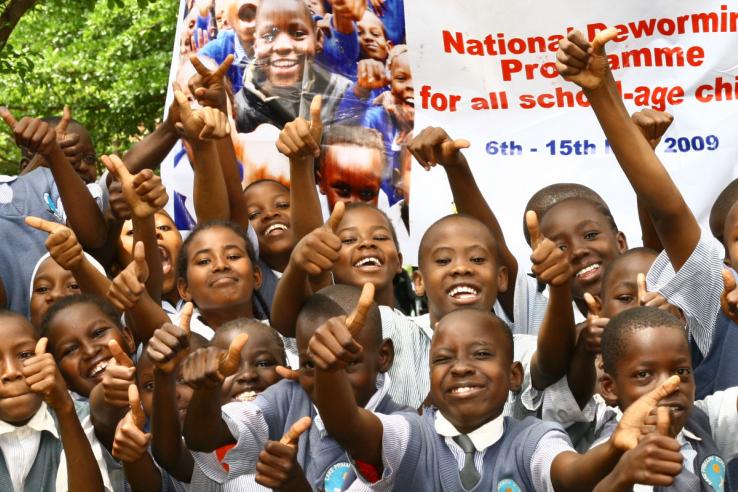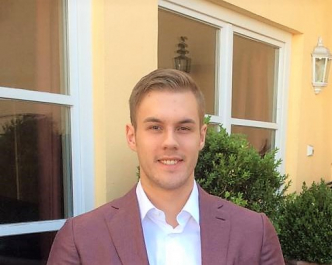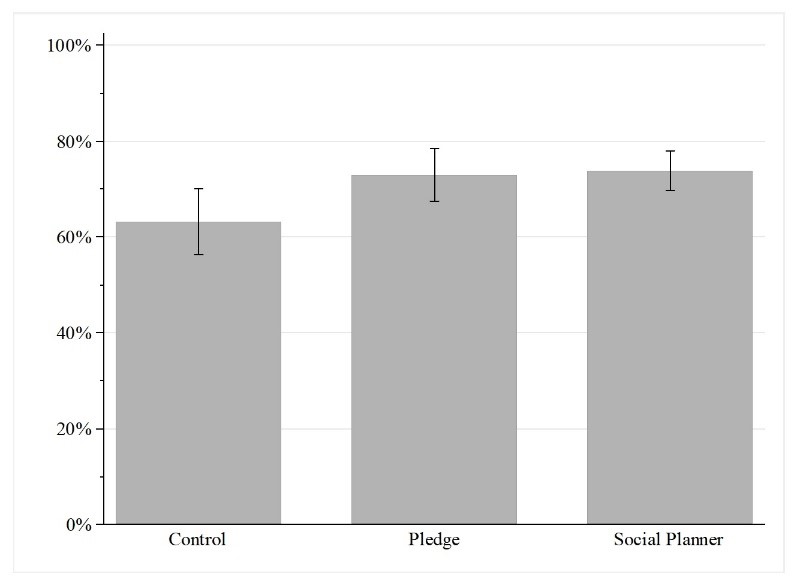How giving pledges encourage effective donations
Each year people donate more than $500 Billion — equivalent to 2.5% of the US GDP. The sheer size of this amount shows that charitable giving has the potential to play a prominent role in the transition towards a more equal and sustainable society. Many examples how highly effective interventions contributed to a more resilient society exist: eradicating smallpox, almost eradicating polio, and spectacularly decreasing malaria. However, opportunities to do real good are lost every day because the lion's share of contributions is donated to ineffective or harmful interventions. Even when effectiveness information is made easily comparable across options, it has a limited impact on donors' choices. Specifically, people frequently choose less effective charity options when those options represent more subjectively preferred causes. This blog entry presents the findings of an ongoing study conducted by Paul Smeets (Professor in Philanthropy and Sustainable Finance) and Janek Kretschmer (Ph.D. in Experimental and Behavioral Finance) that aims to identify new ways to encourage effective donations.


The project picks up the example of deworming pills as an intervention to increase primary school attendance in Sub-Saharan Africa. Scientific charity evaluation shows that it is by far the most effective program to increase school participation, but still, lots of money is spent to provide scholarships instead. A simple presentation of the numbers, like in Figure 1, is not enough to change donors' decisions vastly. Although participants in our study learned that effectiveness differs by almost a factor of 100, they still direct 40% of their contributions to provide scholarships when both options are compared directly.

The literature provides a convincing explanation for this surprising finding. People outside a business school think of charity as a relatively personal, or subjective, decision. Surveys show that the decision to donate to a charity relies more on personal taste than choosing a restaurant or a new cellphone. However, outcome metrics are used to a much greater extent when participants are asked to choose financial investments or imagine to decide upon charitable funds as an agent of an organization. We replicated our colleagues' study in a real donation task and led participants assume a role of responsibility that urges them to allocate to the same charities, but using the university's money.
Our most important treatment — the opportunity to pledge a donation — tested a more practical way to induce a higher sense of responsibility in typical donors, motivating them to use effectiveness information to a greater extent. Fundraisers already rely on pledges to snatch higher contributions from myopic donors. Therefore, almost all charities accept some form of pledges, and some even rely entirely on them. Pledges include millions of calls into fund drives; they include recurring monthly debits to a credit card or bank account that can be stopped at any time and planned gifts written (not irrevocably) into a living person's will. In particular, The Giving Pledge has become a trendy way for ultra-high-net-worth individuals to make a public pledge.
While fundraisers so far have used pledges to stimulate generosity, our research shows that offering donors the chance to pledge part or all of their experimental income to help increase school participation also changes their effectiveness when they return to the study seven days later. All participants in our study showed up for the week one session, which introduced them to both charitable interventions. Along the same lines, all participants received identical effectiveness information during the week two session, just before making their final giving decision. Our analysis shows that this simple pledge treatment increases the share received by the effective option from 60% to more than 70% and also encourages donors to give more to the charitable cause in total (Figure 2).

Comparing the behavior of our pledgers with our third group, the social planners, who were asked to fund the same charities using the university’s money, reveals striking similarities in behavior and survey responses. Participants in both groups gave a significantly higher percentage of their donations to the more effective charity (Figure 3). In line with previous survey studies, our results from an actual donation decision show that both pledgers and social planners assume a similar role of responsibility when allocating aid resources that let them put their personal preferences aside to create an improved outcome for the recipients.

Besides this, both treatment groups report a higher agreement to take a utilitarian approach to charity and show a better understanding of the cost-effectiveness information presented to them. The treatment groups also managed to recall the effectiveness information significantly more often than the control group. In line with this, we observed that the perceived accuracy and appropriateness of the provided effectiveness information plays an important role in the decision of pledgers and social planners. At the same time, it is absolutely irrelevant for the allocation decision of control group members whether the effectiveness information is an accurate and appropriate measure to evaluate the success of the intervention.
At this point, our conclusion remains preliminary because we need more control conditions to rule out alternative explanations and to show that our findings replicate for charitable causes other than primary school attendance in Kenya. Our follow-up study may add two new comparison groups:
- The separated-decision condition to check whether the pledge effect can be explained by "preparation". Donors in the control group had to decide the amount to donate and how to allocate their donations between both charities. Pledgers simply allocated their pledged amount between both charities, as the extremely high correlation between their pledges and final contributions shows. In separated-decision group, participants make their giving decision in two steps. First, they decide how much of their experimental income they wish to donate. Second, they immediately enter the same allocation screen as all the other treatment groups and allocate the committed amount between both charities. Since they cannot undo their previous decision, they have to allocate a fixed amount between both charities and lack the option to keep the money for themselves.
- The buy-information condition to test if the pledge really increases donors' preferences for effective giving or just their attention. This condition lets pledgers and a control group buy the effectiveness information for a small amount of money or some additional effort. This treatment is not only an excellent way to measure pledgers' valuation of their giving decision, but its mechanism of gaining information through effort also reassembles the real world in which scientific charity evaluation is seldom presented on a silver plate.
Did our blog interest you? We gladly reply to questions and receive comments.
References
Andreoni, J., & Serra-Garcia, M. (2021). The pledging puzzle: How can revocable promises increase charitable giving?. Management Science, 67(10), 6198-6210.
Berman, J. Z., Barasch, A., Levine, E. E., & Small, D. A. (2018). Impediments to effective altruism: The role of subjective preferences in charitable giving. Psychological science, 29(5), 834-844.
Also read
-
In his master’s thesis, “Empowering Smallholder Farmers in Data-driven Agriculture through Blockchain Technology,” Daniel Acosta Stasiukynas, MSc Sustainability Science, Policy & Society graduate, explored blockchain technology and its potential to benefit smallholder farmers. In this blog, he...
-
The Grote Gracht is richly lined with historical buildings that conceal remarkable stories. Once again, our “hidden gem” is located on this street in Maastricht, this time at number 76: the (bike) cellar.
-
In their NRO-funded project CO-PILOT of €25,000, Johan Adriaensen, Mirko Reithler and Robyn Ausmeier explore the potential of using Large Language Models (LLMs) as a scaffolding tool for in-class use.


